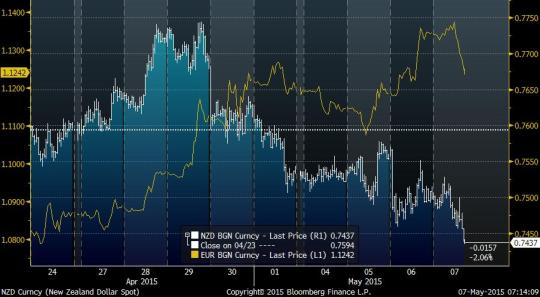
A story sometimes needs to be edited down, and so does a trade. Indeed, if you don’t have portfolio discipline, sooner or later you will have no portfolio.
Whatever form of risk management you use for individual trades, there are times when your risk, as a whole, needs to be trimmed.
When this dreaded moment of a severe drawdown comes, it is easy to fall prey to the delusion of “simplifying” your portfolio.
If you are running a diversified strategy, even at the worst moment, you probably have trades on, which are not doing so badly. So the temptation is to first cut the “winners” and keep the trades which are deep under water. The trades causing you the greatest losses at the moment are bound to look most attractive.
“I liked this stock at $80, I must love it at $60, right?”
I had a painful drawdown over the last few weeks. My long dollar and long bonds strategy came under a lot of pressure. While my positions had been sized to withstand this type of correction, I still had to put myself on “orange alert”.
The morning of April 29th, before the FOMC meeting release, I overviewed my positions to decide how I would reduce risk, if I ended up having no choice.
My biggest short against the dollar was the euro, but I was also short other currencies, including NZD. My conviction stayed with EURUSD, as I wrote in my recent post (May 3rd).
Most currencies had moved against the dollar, but by April 29th, NZD had just stalled. My temptation was to cut NZD first: the negative carry was undercutting my certainty, and at the moment EURUSD was getting juicier.

What would have happened if I had followed through on that instinct? On paper my total risk would have gone down for sure. But while in the following two days my portfolio was still drawing down, EUR and NZD went in the opposite directions. I would, in fact, be losing more money without NZD. The “risk-reduction” would have been self-defeating.
William Faulkner had famously admonished us against self-indulgence:
“In writing, you must kill all your darlings.”
If you decide to reduce market risk, you must cut the positions you love most. Don’t delude yourself by taking off winners, and holding on to cherished losers.
Indeed, if your portfolio is under pressure, what should you be worried about most? The worst case scenario is that things will continue the way they are going now and your losers will continue losing, while your winners may continue winning.
Reduce risk to protect yourself against the worst-case scenario or don’t reduce it at all.
Image by Dr. John B. Padgett


